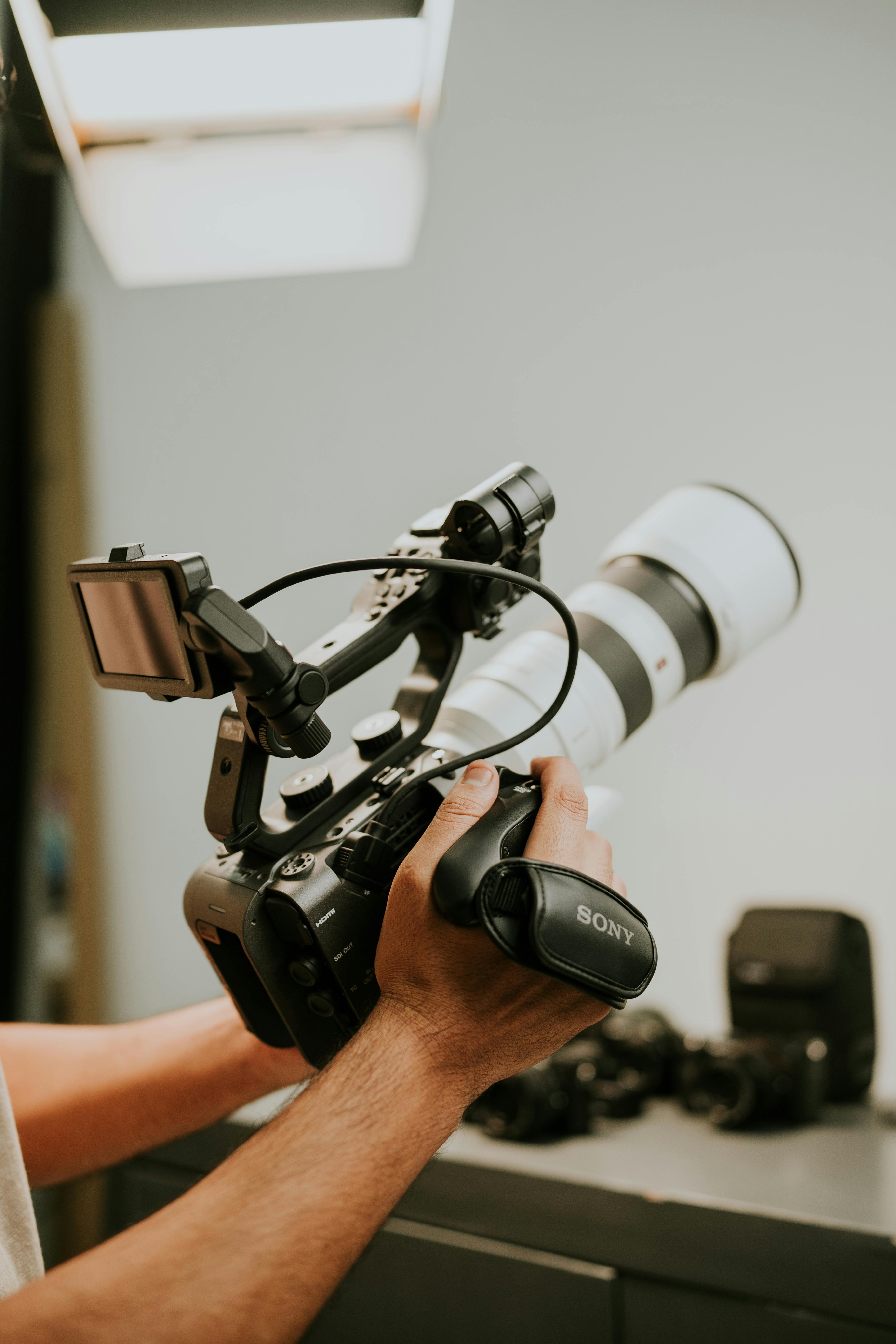Imagine a world where hearing loss is no longer a barrier to communication and connection. In this article, we will explore the ongoing quest to find a cure for hearing loss and the remarkable advancements in research and technology that are bringing us closer to this goal. From groundbreaking therapies to cutting-edge devices, the search for a hearing loss cure is filled with hope and promise, offering a brighter future for millions of individuals affected by this sensory impairment.
Overview of Hearing Loss
Definition of hearing loss
Hearing loss refers to a decrease in the ability to hear sounds. It can range from mild to profound, and can affect one or both ears. The loss of hearing can be either temporary or permanent, and it can result in difficulties understanding speech, communicating with others, and participating in daily activities.
Types of hearing loss
There are different types of hearing loss, which are categorized based on the specific part of the auditory system that is affected. Sensorineural hearing loss occurs when there is damage to the hair cells in the inner ear or to the nerve pathways that transmit sound signals to the brain. Conductive hearing loss, on the other hand, is caused by a blockage or damage to the outer or middle ear, preventing sound from reaching the inner ear. Mixed hearing loss involves a combination of both sensorineural and conductive hearing loss.
Causes of hearing loss
Hearing loss can be caused by a variety of factors. Some people are born with hearing loss, which is known as congenital hearing loss. It can occur due to genetic factors, exposure to certain infections or diseases during pregnancy, or complications during childbirth. Acquired hearing loss, on the other hand, can develop at any age as a result of various causes such as exposure to loud noises, aging, certain medications, infections, or illnesses. Other factors such as head trauma, ear infections, and excessive earwax buildup can also contribute to hearing loss.
Current Treatments for Hearing Loss
Hearing aids
Hearing aids are small electronic devices that amplify sound and make it easier for individuals with hearing loss to hear and communicate. They are designed to fit inside or behind the ear and can be programmed to match individual hearing requirements. Modern hearing aids often utilize advanced technology, such as directional microphones and noise reduction features, to improve the listening experience.
Cochlear implants
Cochlear implants are a surgically implanted electronic device that provides a sense of sound to individuals with severe or profound hearing loss. Unlike hearing aids, which only amplify sound, cochlear implants bypass the damaged parts of the inner ear and directly stimulate the auditory nerve, allowing the individual to perceive sound signals.
Assistive listening devices
Assistive listening devices are devices that help individuals with hearing loss hear more clearly in specific situations. They can include devices such as personal amplifiers, FM systems, or loop systems, which enhance sound signals and reduce background noise in environments like classrooms, theaters, or public spaces.
Middle ear implants
Middle ear implants are small devices that are surgically placed in the middle ear to improve hearing for individuals with certain types of hearing loss. They can improve the conduction of sound vibrations through the middle ear, bypassing any damage to the outer or middle ear.

Importance of Finding a Cure
Impact of hearing loss on everyday life
Hearing loss can have a significant impact on an individual’s everyday life. It can affect their ability to communicate effectively, leading to difficulties in personal relationships, social interactions, and professional settings. Simple tasks like talking on the phone, watching television, or participating in conversations can become challenging and frustrating, potentially leading to feelings of isolation and a decrease in quality of life.
Emotional and psychological effects
The emotional and psychological effects of hearing loss should not be underestimated. It can lead to feelings of frustration, anxiety, and depression, as individuals may struggle to hear and understand what is being said around them. They may experience a loss of confidence and withdraw from social activities, leading to a sense of loneliness and isolation.
Financial burden of hearing loss
Hearing loss can also have a significant financial impact on individuals and society as a whole. The costs associated with hearing aids, cochlear implants, assistive listening devices, and other treatments can be substantial. Additionally, the loss of productivity and potential income due to difficulties in the workplace can further contribute to the financial burden of hearing loss.
Research and Development Efforts
Introduction to ongoing research
There is ongoing research and development focused on finding a cure for hearing loss. Scientists, researchers, and healthcare professionals are working together to understand the underlying mechanisms of hearing loss, explore potential treatment options, and develop innovative technologies to restore and improve hearing.
Scientific advancements in hearing loss research
Advancements in hearing loss research have provided valuable insights into the fundamental biology of the auditory system. Scientists have identified genes associated with hearing loss and developed animal models to study the effects of genetic mutations. This research has deepened our understanding of the molecular and cellular processes involved in hearing and has paved the way for potential therapies.
Gene therapy and its potential
Gene therapy holds promise as a potential treatment for hearing loss caused by genetic mutations. It involves delivering healthy genes to replace or repair the faulty genes responsible for hearing loss. While gene therapy for hearing loss is still in the early stages of development, it has shown encouraging results in preclinical studies and holds great potential for the future.
Stem cell therapy for hearing loss
Stem cell therapy is another area of research that offers hope for the treatment of hearing loss. Stem cells have the ability to differentiate into different cell types, including hair cells in the inner ear, which are essential for hearing. Scientists are exploring ways to regenerate damaged or lost hair cells using stem cells, with the goal of restoring hearing function.
Nanotechnology in curing hearing loss
Nanotechnology, the manipulation of matter at the nanoscale, is being investigated for its potential in curing hearing loss. Researchers are exploring the use of nanomaterials and nanoparticles to deliver drugs directly to the inner ear, targeting specific cells or structures involved in hearing loss. This targeted approach has the potential to enhance the effectiveness and safety of treatments for hearing loss.

Challenges in Finding a Cure
Complexity and diversity of hearing loss
One of the major challenges in finding a cure for hearing loss stems from its complexity and the diversity of underlying causes. Hearing loss can be influenced by a combination of genetic, environmental, and lifestyle factors, making it difficult to develop a one-size-fits-all cure. Understanding the intricacies of each individual’s hearing loss and tailoring treatments accordingly is a complex task.
Lack of understanding of the underlying mechanisms
While significant progress has been made in understanding the basic mechanisms of hearing loss, there is still much to learn. The precise cellular and molecular events that lead to the different types of hearing loss are not yet fully understood, hindering the development of targeted therapies. Further research is needed to unravel these mechanisms and unlock the potential for more effective treatments.
Limited funding and resources
Research and development efforts in finding a cure for hearing loss often face limitations in funding and resources. Hearing loss might not receive the same level of attention and funding as other medical conditions, which can hinder progress in this field. Increased investment and support are needed to accelerate research and development efforts and bring new treatment options to those in need.
Promising Breakthroughs
Hair cell regeneration
Research has shown that hair cells, which are critical for hearing, can regenerate in certain animals. Scientists are investigating ways to trigger hair cell regeneration in humans, either through drug treatments or the use of stem cells. The ability to regenerate damaged or lost hair cells could potentially restore hearing function in individuals with hearing loss.
Optogenetic approaches for restoring hearing
Optogenetics is a technique that uses light to control the activity of cells genetically modified to respond to light. Researchers are exploring the use of optogenetics to restore hearing by engineering light-sensitive proteins in the inner ear. This innovative approach has shown promising results in animal studies and has the potential to restore hearing in humans in the future.
Drug-based treatments for hearing loss
The development of drugs specifically targeting the underlying causes of hearing loss is an area of active research. Various compounds and molecules are being tested to address the specific cellular and molecular events that lead to hearing loss. These drug-based treatments have the potential to prevent or slow down the progression of hearing loss, improving the quality of life for individuals with this condition.
Biomimetic approaches in hearing restoration
Biomimetics is a field that seeks to mimic biological systems and processes to develop innovative solutions. In the context of hearing loss, scientists are exploring biomimetic approaches to develop implantable devices that can replicate the function of the damaged or lost hair cells in the inner ear. These devices aim to restore hearing by mimicking the natural process of sound detection and transmission.

Future Perspectives
Collaboration between researchers and clinicians
Collaboration between researchers and clinicians is critical for advancing the field of hearing loss research and translating scientific discoveries into practical treatments. By working together, researchers can gain valuable insights from clinicians’ experiences and feedback, while clinicians can benefit from the latest scientific knowledge and advancements. This collaboration fosters a multidisciplinary approach that maximizes the potential for breakthroughs.
Participation in clinical trials
Participation in clinical trials is essential for the development and evaluation of new treatment options for hearing loss. Clinical trials allow researchers to test the safety and efficacy of new therapies in a controlled and monitored setting. By enrolling in these trials, individuals with hearing loss have the opportunity to contribute to the advancement of hearing loss treatment and potentially benefit from the latest innovations.
Improving accessibility to treatment options
Ensuring that treatment options for hearing loss are accessible to all individuals is crucial. This includes considerations of affordability, availability, and education. Efforts should be made to make hearing aids, cochlear implants, and other treatments more affordable and accessible to individuals from diverse socioeconomic backgrounds. Additionally, raising awareness about hearing loss and the available treatment options can help empower individuals to seek help and support.
Integration of technology and innovations
The integration of technology and innovations holds great potential for improving the efficacy and accessibility of hearing loss treatments. From smartphone apps that facilitate communication to advancements in implantable devices, technology can play a significant role in enhancing the quality of life for individuals with hearing loss. Continued research and development in this area will contribute to further advancements and innovations in the field.
Ethical Considerations
Balancing risks and benefits
In the pursuit of a cure for hearing loss, it is important to carefully consider the risks and benefits of potential treatments. Ethical considerations include ensuring that the potential benefits of a treatment outweigh the risks and that the treatment is safe and effective. Balancing these factors is crucial to protect the well-being and safety of individuals with hearing loss.
Informed consent
Informed consent is an essential ethical consideration in any medical treatment, including those for hearing loss. Individuals should be provided with comprehensive information about the benefits, risks, and potential outcomes of a treatment option, enabling them to make an informed decision about their care. Ensuring informed consent promotes autonomy and empowers individuals to make choices aligned with their preferences and values.
Equitable distribution of treatment options
Equitable distribution of treatment options is a fundamental ethical consideration. Efforts should be made to ensure that individuals with hearing loss, regardless of their socioeconomic background, geographic location, or other demographic factors, have equal access to treatment options. Eliminating barriers to access and addressing inequities are vital to ensure that everyone has the opportunity to benefit from advancements in hearing loss treatment.

Lifestyle Modifications for Hearing Loss
Communication strategies for those with hearing loss
Individuals with hearing loss can adopt various communication strategies to improve their ability to understand and be understood. These strategies include facing the person they are speaking with, reducing background noise, using visual cues and gestures, and asking for repetition or clarification when needed. Additionally, learning how to lip-read and communicate effectively in different environments can enhance communication and mitigate the challenges associated with hearing loss.
Assistive devices for daily activities
Assistive devices can significantly improve the daily lives of individuals with hearing loss. These devices include amplified telephones, captioned televisions, vibrating alarm clocks, and flashing doorbells. Assistive devices for listening to music and watching movies or videos can also enhance the auditory experience for individuals with hearing loss. Exploring and utilizing these devices can make daily activities more accessible and enjoyable.
Hearing loss prevention and protection
Prevention and protection strategies are essential for maintaining healthy hearing. These strategies include wearing ear protection, such as earplugs or earmuffs, in loud environments, limiting exposure to loud noises, and seeking prompt medical attention for ear infections or other ear-related issues. Educating individuals about the importance of hearing protection and prevention can help reduce the incidence and severity of hearing loss.
Conclusion
The search for a cure for hearing loss continues to progress, driven by advancements in research and development efforts. The impact of hearing loss on individuals’ lives, both emotionally and financially, underscores the urgency of finding effective treatments. Promising breakthroughs in hair cell regeneration, optogenetics, drug-based treatments, and biomimetic approaches offer hope for the future. Collaboration between researchers and clinicians, participation in clinical trials, and improvements in accessibility will further accelerate progress in this field. By supporting individuals with hearing loss, promoting early detection and intervention, and prioritizing efforts to find a cure, we can collectively work towards a future where hearing loss is no longer a barrier to a fulfilling life.
